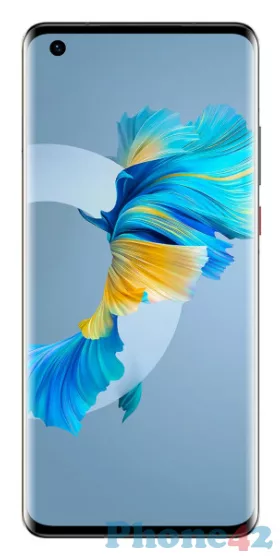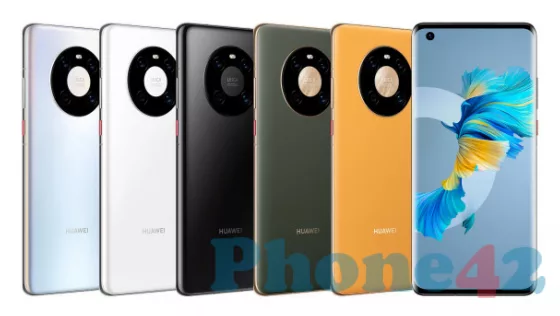
Huawei Mate 40 (2020)
The manufacturer offers this phone with a 6.5 inch OLED display, a HiSilicon Kirin 9000E chipset, and 8 GB of RAM.
Explore its upsides and downsides!
Table of Contents
- Huawei Mate 40 specifications
- Weight, dimensions, colors
- System, chipset, performance
- Display type, size, resolution
- Memory, storage
- Cameras, flash
- Connectivity, network, wireless
- Battery type, capacity, charger
- Features, sensors, specials
- Verdict, pros and cons
This article shares our personal experiences and thoughts about using the Huawei Mate 40 smartphone. We hope to offer helpful insights to others interested in this device.

Huawei Mate 40 specifications
| Brand | Huawei |
|---|---|
| Name | Mate 40 |
| Model | MATE40 |
| Release date | 2020 |
Weight, dimensions, colors
| Weight | 6.63 oz |
|---|---|
| Dimensions | 6.24 x 2.85 x 0.35 inch |
| Colors | black, green, silver, white, yellow |
| SIM type | Nano SIM |
The weight of the Huawei Mate 40 is still considered to be lightweight and portable. Smartphones use a Nano SIM as a subscriber identity module (SIM), which is a chip card.
System, chipset, performance
| OS version | Android OS v10.0 |
|---|---|
| SoC | HiSilicon Kirin 9000E |
| CPU | Octa-core, Singe-core 3.13 GHz Cortex-A77, Triple-core 2.54 Ghz Cortex-A77, Quad-core 2.04 Ghz Cortex-A55 |
| GPU | Mali-G78 MP16 |
The Huawei Mate 40 comes with Android OS v10.0 out of the box. Google regularly releases new versions of Android. They have new features, improvements, and security updates. This octa-core CPU consists: Octa-core, Singe-core 3.13 GHz Cortex-A77, Triple-core 2.54 Ghz Cortex-A77, Quad-core 2.04 Ghz Cortex-A55. Many people consider ARM Mali GPUs a good option for mobile devices.
Display type, size, resolution
| Display type | OLED |
|---|---|
| Screen size | 6.5 inch |
| Resolution | 1080 x 2376 px |
| Multitouch support | yes |
The 6.5 inch OLED display has fast response times. They can quickly transition between colors and refresh rates. The 6.5 inch display should be big enough for our needs. It will make viewing comfortable. This is true whether we're reading, browsing, or watching. The display size is the diagonal distance from one corner of the screen to the opposite corner.

Memory, storage
| RAM | 8 GB |
|---|---|
| Internal storage | 128 GB |
| Memory card slot | NM Card |
The 8 GB of RAM on the Huawei Mate 40 should be more than enough to handle their daily needs without any major issues. The needed RAM amount for good performance depends on factors. These include the OS, the apps, and the services we use. The Mate 40 has 128 GB of internal storage, which is more than enough for their needs. The internal storage of Mate 40 (128 GB) can be expanded with a compatible NM card.
Cameras, flash
| Main camera | 50 + 16 + 8 MP, 8192 x 6144 px, autofocus, optical image stabilization |
|---|---|
| Flash | Dual LED |
| Selfie camera | 13 MP |
The Mate 40 has a multi-camera setup. It lets us adapt to different photography situations. We can achieve various perspectives and compositions. The Mate 40 offers optical image stabilization (OIS) for their rear camera systems.
Connectivity, network, wireless
| GSM 2G bands | 850 / 900 / 1800 / 1900 |
|---|---|
| Network coverage | 2G / 3G / 4G / 5G |
| Wi-Fi | Wi-Fi 802.11 a/b/g/n/ac |
| Bluetooth | v5.2 |
| GPS | A-GPS, GLONASS |
| NFC | yes |
| FM radio | no |
| USB | USB Type-C |
| Headphone | 3.5 mm jack |
The Huawei Mate 40 supports the latest 5G network technology. The Mate 40 supports the latest Wi-Fi standards. We can use Bluetooth to connect our Mate 40 smartphone to many Bluetooth devices. The Mate 40 has a GPS receiver. Many fitness and activity tracking apps rely on GPS. It is used to accurately measure and record outdoor activities. The Mate 40 has a built-in NFC chip, which allows it to support various NFC applications and services. The 3.5 mm headphone jack allows us to connect wired headphones or earphones to the device.
Battery type, capacity, charger
| Type | Li-Po 4200 mAh, non-removable |
|---|
The Li-Po 4200 mAh, non-removable battery gives the smartphone a good battery backup. The lithium polymer (Li-Po) battery is a light-weight, rechargeable battery. The Mate 40 does not have a removable battery, it integrates the battery into the phone's design.
Features, sensors, specials
| Sensors | accelerometer, barometer, color temperature sensor, compass, fingerprint, gyroscope, hall, laser sensor, light, proximity, x-axis linear motor |
|---|---|
| Specials | Corning Gorilla Glass, Dual SIM, Fast charging, Leather |
Today, smartphones come with many sensors. They help make the user experience better. The Mate 40 smartphone has an accelerometer. The fingerprint reader is a biometric security feature found in Mate 40 smartphones. The light sensor is a type of sensor in a smartphone. It lets the phone measure light intensity around the device. Dual SIM is great for businesses. They want to give staff a device with separate numbers and bills for personal and business use.
With fast charging, we can get a significant amount of battery life in a few minutes of charging. Corning Gorilla Glass is a type of chemically strengthened super-glass.
Verdict, pros and cons
Every phone has its strengths and weaknesses, and this Huawei phone is no exception. As with any device, there are aspects that shine and others that fall short. By examining both sides, we can paint a complete picture of what this phone has to offer. Let's explore its standout features and areas for improvement. Remember, this is just my opinion, and yours might be different.
Pros
- OLED display
- appropriate screen size
- generous memory
- generous internal storage
- multicamera setup
- optical image stabilization (OIS)
- 5G support
- Dual SIM support
- Corning Gorilla Glass shield
Cons
- NM Card slot
- low-capacity battery
Please let us know if you find incorrect information or something isn't working. Also, tell us if you have a suggestion for improvement.
Updated: July 23, 2024
 I'm Lucas Bradley, the founder of the Phone42.com site. I love technology, especially smartphones, and I've been working with tech stuff for more than 20 years. This means I've seen a lot of changes and have learned a bunch about what makes a good phone. On Phone42.com, I look at all kinds of phones. They can be from big, well-known companies or new ones trying to make their mark. I want to help people understand what's new and cool in the world of smartphones, in a way that's easy to get.
I'm Lucas Bradley, the founder of the Phone42.com site. I love technology, especially smartphones, and I've been working with tech stuff for more than 20 years. This means I've seen a lot of changes and have learned a bunch about what makes a good phone. On Phone42.com, I look at all kinds of phones. They can be from big, well-known companies or new ones trying to make their mark. I want to help people understand what's new and cool in the world of smartphones, in a way that's easy to get.